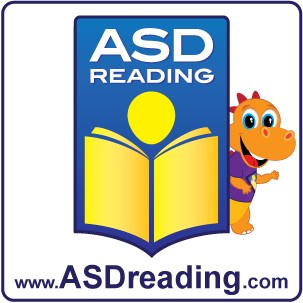Children with Autism Spectrum Disorder (ASD) require a certain level of repetition and direct, concrete statements to help them focus at tasks at hand. The ASD Reading program is developed by Dr. Blank in hopes of helping even non-verbal ASD children develop language skills in reading and writing.
I was given the opportunity to try out this program for free with my 5-year-old son in exchange for this review that you are reading now. My son is not autistic but is a little behind the game in his reading and writing. On first impression, the program is bright and fun, which really helps draw in the attention of children. It isn’t overbearing with animations, noise, nor overly visually stimulating, which is a good thing. Having too much stimulus in an educational program can easily overwhelm small children, especially those with ASD. Being overstimulated can cause outbursts or complete shut-downs as children with ASD are often hyper-sensitive to sounds or visual stimulus.
My son and I started the program–him in control of the computer and me only present to offer guidance as needed. The program has a lot of repetition and short instructions, which is great for ASD children, however, these repetitions are not always consistent and at times, the instructions are not clear. As an example, the voice instructs “look at these” in reference to letters on the screen, then instructs “click the same ones here,” then all of the letters light up, which could easily confuse children into clicking each of the letters.
Although confusing at times and my son often did not understand the instructions nor was he able to pass the skills tests due to mis-clicking, mis-typing, not knowing expectations and so forth; he was kept engaged the entire time and had a lot of fun interacting with the ASD program.
If an incorrect letter is selected, as might be done easily out confusion per the persuasive tone and highlighted letters, the program takes over not allowing many attempts nor much time at all, “watch” the friendly voice will say then proceed to show the correct letters. At this point, I watched my son continue to try and select the correct letters as either a short amount of time had passed or he was aware that he mis-clicked the wrong letter due simply to inexperience using the mouse and he was now trying to correct the mistake–an opportunity that this program does not afford.
While the program is speaking and giving instructions, which are appropriately repetitive for ASD children, the program blocks the kids from working. This is good for encouraging the kids to pay attention to instructions rather than assuming what is expected of them. On the other hand, this can also be discouraging to children who are excited to continue working while the voice instructs them.
There is a fishing game that looks super fun as the letter bubbles float up the screen, the child is instructed to type the letter on the keyboard before it reaches the top. This particular game was ridiculously fast. There wasn’t enough time for my son to see the letter, acknowledge what letter it was, then find it on the keyboard in order to pop the bubble. He was incredibly excited to play the game, even though he got maybe 2 letters of the 20 that were rising faster than he could “See, think, do.” I also found that the font choice for some of the games and interactions made letter distinguishing a little difficult.
During the reading test to establish his level of reading, the instructions said “Click these” while multiple word sounds appeared inside the interactive bubble, which is easily interpreted as the program asking the children to click each of the appearing word sounds, when the program is actually asking the kid to click the word sounds that it is about to carry on to say. Of course, if the kid clicks the wrong one, the game is already over.
Another troubling thing I found is that there is no apparent full screen option, which would help prevent outside distractions from the many bookmark tabs I personally have in my browser! And also help prevent kids from accidentally clicking out of the program easily.
There was also a focus on punctuation and capitalization in the kindergarten section, which felt a little advanced or out of the scope for ASD children whose primary focus is letter recognition and sounds, but that might just be me being nit-picky.
There were a few times where I, as the overseeing parent, had no idea what was being asked of my son. I wasn’t always clear on what the program was wanting my son to do and he wasn’t clear on the task, either. After the initial screen/placement tests, a screen came up saying that he needed to score 20,000 points to open his passport, but no obvious instructions regarding what the passport was for him to know what it is or why he would want to do that and there weren’t any instructions on how to score said points. We made a guess and clicked the red arrow pointing right to proceed, even though red is often associated with stopping or logging out rather than continuing on.
All in all, although my patience was tested, my son was totally unphased and learned a lot from the program. Fortunately, the ASD Reading program offers a free trial so parents can test it out before purchasing the program for their kids.

